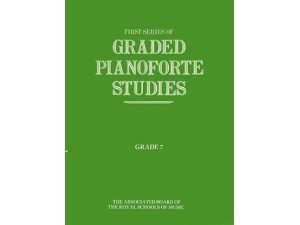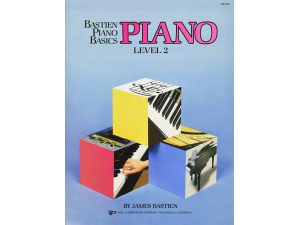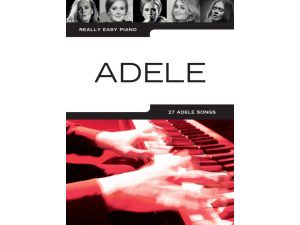Description
Sixty studies for the beginner pianist, including works by Carl Czerny, Cornelius Gurlitt and Hedwig McEwen.
Contents:
- For Ease in Turning the Fore-arm – Kohler, Op. 300 No. 50.
- For Full Singing Tone – Czerny, Op. 599 No. 3.
- For Ease in Turning the Fore-arm – Hedwig McEwen.
- For Finger Control – Kohler, Op. 300 No. 22.
- For Imitation between the Hands – Gurlitt, Op. 82 No. 12.
- For Imitation between the Hands – H. Wohlfahrt, Op. 88 No. 4.
- For Tempo Variations – Beyer, Op. 101 No. 37.
- For Ease in Turning the Fore-arm – Gurlitt, Op. 82 No. 9.
- For Using Lightly the Thumb of the Left Hand – Beyer, Op. 101 No. 39.
- For Using Lightly the Fifth Fingers – Gurlitt, Op. 82 No. 25(ii).
- To Show the Melody on the Weak Beats – Gurlitt, Op. 82 No. 25 (iii).
- For Full and Brilliant Tone – F. Wohlfahrt, Op. 36 No. 6.
- For Legato and Evenness of Tone – Beyer, Op. 101 No. 25.
- For the Lilt of Triple Time – Gurlitt, Op. 187 No. 18.
- For the Lilt of Triple Time – Gurlitt, Op. 187 No. 19.
- For Imitation between the Hands – F. Wohlfahrt, Op. 36 No. 5.
- For Full and Brilliant Tone – Beyer, Op. 101 No. 16.
- For Similar Motion – Kohler, Op. 218 No. 16.
- For Imitation between the Hands – Gurlitt, Op. 82 No. 17.
- For Cantabile Tone – Gurlitt, Op. 187 No. 30.
- For Legato and Evenness of Note Successions – Kohler, Op. 30 No. 40.
- For Marcato Touch and Strict Time – Kohler, Op. 218 No. 18.
- For Playing Broken Chords Legato – Beyer, Op. 101 No. 57.
- For Tone Graduations – Beyer, Op. 101 No. 53.
- For ~Playing Two Melodies Together – F. Wohlfahrt, from Op. 36.
- For Playing Broken Chords Evenly – Gurlitt, Op. 187 No. 37.
- For Tone Gradations and Legato – F. Wohlfahrt, from Op. 36.
- For Dotted Notes – Gurlitt, Op. 187, No. 9.
- For Dotted Notes – H. Wohlfahrt, Op. 88 No. 6.
- For Silent Beats – Hedwig McEwen.
- For Silent Beats – Gurlitt, Op. 82 No. 34.
- For Tied Accented Notes – Beyer, Op. 101 No. 29.
- For Tied Unaccented Notes – F. Wohlfahrt, Op. 36 No. 26.
- For Trills – Bertini, Op. 137 No. 2.
- For Rapid Rebound of the Keys – F. Wohlfahrt, Op. 36 No 17.
- For Rapid Rebound of the Keys – Hedwig McEwen.
- For Phrasing – Kohler, Op. 190 No. 34.
- For Slurs from Accented Notes – Gurlitt, Op. 82 No. 44.
- For Sluts from Accented Notes – Bertini, Op. 137 No. 21.
- For Compound time and Legato – Gurlitt, Op. 187 No. 31.
- For the Half-Tone Scale – Hedwig McEwen.
- For the Whole-Tone Scale Hedwig McEwen.
- For Turning the Fingers Over the Thumb – Gurlitt, Op. 82 No. 56.
- For Double Notes – Beyer, Op. 101 No. 68.
- For Double Notes – Beyer, Op. 101 No. 69.
- For Bringing out the Melody in the Inner Parts – Gurlitt, Op. 82 No. 25.
- For Phrasing – Le Couppey.
- For Tempo Variations – Hedwig McEwen.
- For Slurs from Unaccented Notes – F. Wohlfahrt, Op. 36 No. 21.
- For Phrasing – Beyer, Op. 101 No. 60.
- For Syncopation – Bertini, Op. 137 No. 11.
- For Phrasing and Tone Contrast – Gurlitt, Op. 187 No. 32.
- For Finger Control – Gurlitt, Op. 82 No. 29.
- For Finger Control – Gurlitt, Op. 82 No. 30.
- For Phrasing and Tone Contrast – F. Wohlfahrt, from Op. 36.
- For Phrasing, Steadiness and Accent – F. Wohlfahrt, Op. 36 No. 18.
- For Accompaniment – Gurlitt, Op. 187 No. 22.
- For Trill – Hedwig McEwen.
- For Tone Gradations and Legato – Beyer, Op. 101 No. 75.
- For Tempo Variations and for Turning fingers over Thumb and Thumb under Fingers – Gurlitt, Op. 187 No. 50.







